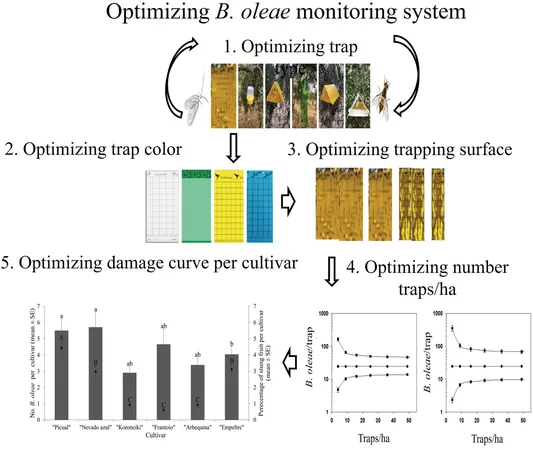
Revolutionizing Olive Fly Management: Smaller Traps Enhance Monitoring Efficiency
2025-03-25
Author: John Tan
Introduction
In a groundbreaking study published in the Journal of Economic Entomology, researchers from the University of Córdoba have discovered that utilizing smaller yellow adhesive traps can significantly improve the monitoring of olive fly populations, a notorious pest that jeopardizes the quality of olive oil production.
The Olive Fly Problem
The olive fly has long been a formidable adversary for olive growers, inflicting damage that reduces fruit weight while elevating oil acidity. As a result, growers have been on a relentless quest to manage this pest, striving to implement Integrated Pest Management (IPM) strategies that prioritize minimal chemical usage.
The Study Overview
Researcher Meelad Yousef, alongside colleagues Enrique Quesada, Flora Moreno, and Pablo Valverde, spearheaded a comprehensive two-year field study that analyzed various trapping techniques across Córdoba and Cádiz provinces. Their findings revealed that small double-sided yellow adhesive panels (measuring 10 cm by 25 cm) are the most effective tools for assessing olive fly numbers.
Recommendations for Trap Distribution
The optimal distribution was found to be 15 traps per hectare, although 4 traps per hectare still yielded effective population estimations. This research addresses a significant gap in Spain’s current Integrated Pest Management Guide, which suggested an outdated standard of 6 traps for every 300 hectares without detailing the best type of traps to use.
Yellow Traps Proven Effective
Interestingly, the study compared different trap designs and colors, confirming that yellow traps proved the most attractive to olive flies. Importantly, smaller yellow traps (10 cm x 25 cm) demonstrated superior performance over larger alternatives (20 cm x 25 cm), capturing similar fly numbers while minimizing the capture of beneficial insects.
Strategic Trap Placement
In a further development, Moreno highlighted the strategic placement of traps, emphasizing that the recommended distances between them could help farmers time their treatments more accurately, ultimately reducing unnecessary costs.
Varietal Vulnerabilities
Moreover, the researchers explored the relationship between olive fly populations and the specific varieties of olive trees planted. They found that not all varieties respond equally to infestations—10 flies may wreak havoc on one type while leaving another relatively unscathed.
Future Innovations
Looking ahead, the advancements presented in this study could set the stage for innovative electronic traps capable of transmitting real-time data directly to farmers and agricultural technicians. Such technology could revolutionize the way olive fly populations are managed, ensuring that control measures are both timely and effective.
Conclusion
Stay tuned as we continue to report on the latest developments in agricultural pest management and how cutting-edge research is shaping the future of sustainable farming!



 Brasil (PT)
Brasil (PT)
 Canada (EN)
Canada (EN)
 Chile (ES)
Chile (ES)
 Česko (CS)
Česko (CS)
 대한민국 (KO)
대한민국 (KO)
 España (ES)
España (ES)
 France (FR)
France (FR)
 Hong Kong (EN)
Hong Kong (EN)
 Italia (IT)
Italia (IT)
 日本 (JA)
日本 (JA)
 Magyarország (HU)
Magyarország (HU)
 Norge (NO)
Norge (NO)
 Polska (PL)
Polska (PL)
 Schweiz (DE)
Schweiz (DE)
 Singapore (EN)
Singapore (EN)
 Sverige (SV)
Sverige (SV)
 Suomi (FI)
Suomi (FI)
 Türkiye (TR)
Türkiye (TR)
 الإمارات العربية المتحدة (AR)
الإمارات العربية المتحدة (AR)